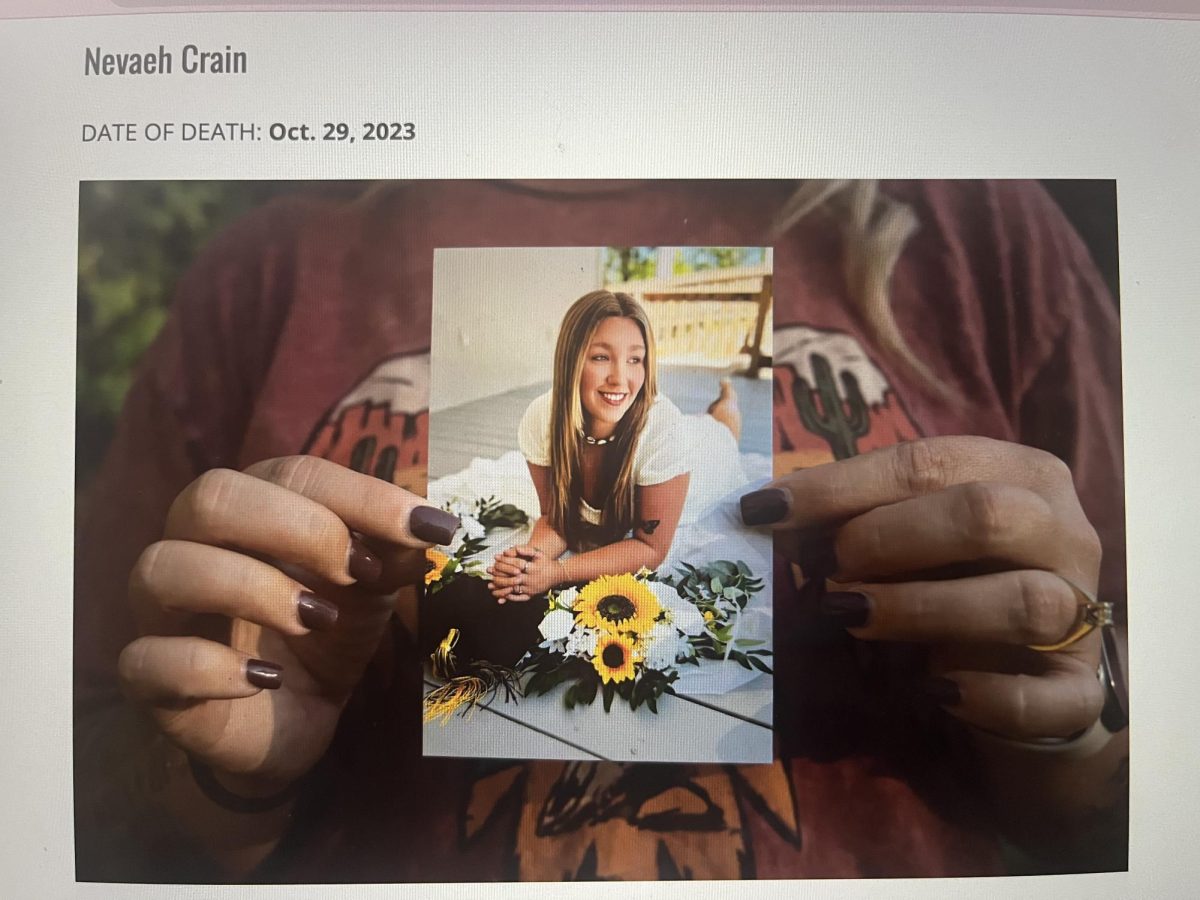When Roe v. Wade was overturned in June of 2022, reproductive rights were left up to the states to individually decide how they would manage this aspect of women’s health. Currently, 13 states have an abortion ban with nearly or absolutely no exceptions. Because of this, women are dying from complications that could be solved with procedures that are newly illegal in the states they live in. California currently protects a woman’s right to reproductive healthcare.
“The number of women in Texas who died while pregnant, during labor or soon after childbirth skyrocketed following the state’s 2021 ban on abortion care — far outpacing a slower rise in maternal mortality across the nation, a new investigation of federal public health data finds,” says NBC News. “From 2019 to 2022, the rate of maternal mortality cases in Texas rose by 56%, compared with just 11% nationwide during the same time period, according to an analysis by the Gender Equity Policy Institute.”
In Georgia, during Fall of 2022, Candi Miller, a mother of three, discovered she was pregnant. Previously being told by her doctor that she could die if she got pregnant again due to several health complications (including Lupus), she opted to terminate her pregnancy with abortion pills she found online. According to ProPublica, “Georgia’s new abortion ban gave her no choice. Although it made exceptions for acute, life-threatening emergencies, it didn’t account for chronic conditions, even those known to present lethal risks later in pregnancy.”
The pills terminated the pregnancy but failed to expel all the pregnancy tissue from her body. Afraid to seek proper care in her home state with strict abortion laws, Miller died in her home with her three year old by her side. The state’s maternal-mortality review deemed her death preventable.
“Of course I can see how it is wrong to kill something before it even gets a chance at life, but I don’t think that that should get in the way of a woman who is alive and still has a chance to save themselves,” says QUEST junior Lily Gonzalez.
There are several other cases similar to Miller’s, while not all were fatal, women were left with severe complications. In many of the cases, the mother was not looking to terminate their pregnancy at all.
Nevaeh Crain, an 18 year old girl, was one of these women. Twenty hours and three visits to the ER after what was supposed to be the day of her baby shower, Crain would die in a Texas hospital room. She came in violently vomiting and in severe abdominal pain. Doctors positively test her for strep, but failed to test her further. Even after being sent home, Crain was still in severe pain, so she went to another hospital but was once again sent home with more antibiotics.

Back home Crain was still in severe pain and after a trip to the bathroom, Crain realized her worst nightmare came true, she miscarried her baby from effects of the still undetected infection in her body. Even though her health was rapidly declining from the untreated infections, Texas’s strict abortion laws require confirmation of the demise of the fetus before conducting any procedures. By the time they moved her to intensive care, it was too late. Doctors say she died of sepsis, which she had failed to be tested for even though symptoms pointed to this conclusion.
The reason abortion laws are being blamed for the death of women like Nevaeh Crain and Candi Miller is because not only are women afraid of seeking proper care in states where abortion bans are in place, but doctors are afraid of prosecution if they were to conduct an illegal procedure. For instance, the multiple ultrasounds that were ordered to confirm the death of Crain’s baby were an effort to ensure the death of the fetus before moving forward with the now illegal procedure of an abortion.
Neveah Crain and Candi Miller are only two instances of complications with abortion bans and with President-elect Donald Trump promising to leave abortion on the ballot, they certainly will not be the last.




























Emily Garcia • Jan 15, 2025 at 3:08 pm
On January 14, 2025, Kayla Castillo wrote an article titled “The Complications of Abortion Bans”. Kayla did a fantastic job at addressing an important issue that’s been affecting many lives. Kayla presented that when Roe v. Wade was overturned, 13 states banned abortion and this affected many women. Kayla presents statistics and data on women who have died due to the abortion ban. Kayla also shares the stories of women who have been affected by the abortion ban. Kayla did an amazing job of sharing the stories of the women who have been affected by this. The article also provided an interview with a student at Millikan, sharing their opinion about this issue. I like that Kayla added a students opinion about this issue!
This article also addressed the reason why the abortion ban is being blamed for the death of some of these women, and that is that Doctors are afraid to perform an illegal procedure. This is sad that doctors are afraid to provide necessary care. It’s heartbreaking that so many women are being affected by this and dying because of a law. It’s saddening how the abortion ban is going to affect so many more women. The few women that Kayla shared in the article are Candi Miller and Nevah Crain. When I read their stories, it devastated me that they had to go through this. No woman should have to go through this.
Ketura Espinoza • Jan 15, 2025 at 2:02 pm
On January 14, 2025, Kayla Castillo wrote an article entitled “The Complications of Abortion Bans.” This article is important to me because as a female, I believe I should have a say in what I’m allowed and not allowed to do with my body. I think that with a male president who is trying to take this right away from women, he doesn’t see the risks that women have without having an option to get an abortion. As stated in this article, the death rate of women who died due to pregnancy has completely skyrocketed. People fail to realize that mistakes happen and we shouldn’t be forced to live with something we don’t want, especially because there are many risks of being pregnant.
I was pleased to read this article because this topic needs more attention because hardly anyone cares about this topic. I also appreciate how Kayla Castillo included an actual event of someone passing because she wasn’t allowed to get an abortion.
Emily Garcia • Jan 14, 2025 at 8:44 pm
On January 14, 2025, Kayla Castillo wrote an article titled “The Complications of Abortion Bans”. Kayla did a fantastic job at addressing an important issue that’s been affecting many lives. Kayla presented that when Roe v. Wade was overturned, 13 states banned abortion and this affected many women. Kayla presents statistics and data on women who have died due to the abortion ban. Kayla also shares the stories of women who have been affected by the abortion ban. Kayla did an amazing job of sharing the stories of the women who have been affected by this. The article also provided an interview with a student at Millikan, sharing their opinion about this issue. I liked that Kayla put an interview of a student’s opinion in the article!
This article also addressed the reason why the abortion ban is being blamed for the death of some of these women, and that is that Doctors are afraid to perform an illegal procedure. This is sad that doctors are afraid to provide necessary care. It’s heartbreaking that so many women are being affected by this and dying because of a law. It’s saddening how the abortion ban is going to affect so many more women. The few women that Kayla shared in the article are Candi Miller and Nevah Crain. When I read their stories, it devastated me that they had to go through this. No woman should have to go through this.
Payton Kelly • Jan 14, 2025 at 3:31 pm
On January 14, 2025, Kayla Castillo wrote the article entitled “The Complications of Abortion Bans”. The title immediately captivated my attention, with not only abortion being an insanely controversial topic, but additionally the use of the word ‘complications’ in the title intrigued me, and left me curious on what the current issues of abortion restriction are.
This article enlightened me on multiple aspects, presenting new information I was unfamiliar with prior to reading. For instance, I was unaware that 13 states in the U.S. currently hold strict abortion barriers post the Supreme Court decision overturning Roe v. Wade. Additionally, Castillo’s inclusion of specific cases demonstrating how abortion bans provoked two women’s preventable deaths are very powerful and invites the reader to reflect upon the impact of such restrictions.
Finally, the concluding sentence of Castillo’s article is extremely powerful and an effective way to conclude this topic. It additionally invites readers to think further about this topic, and to consider the current concerns and implications of Donald Trump’s presidency and his stance on the legality of abortion. This article was very well-written and did an excellent job informing the reader on the current abortion-ban situation and the effects of such restrictions.